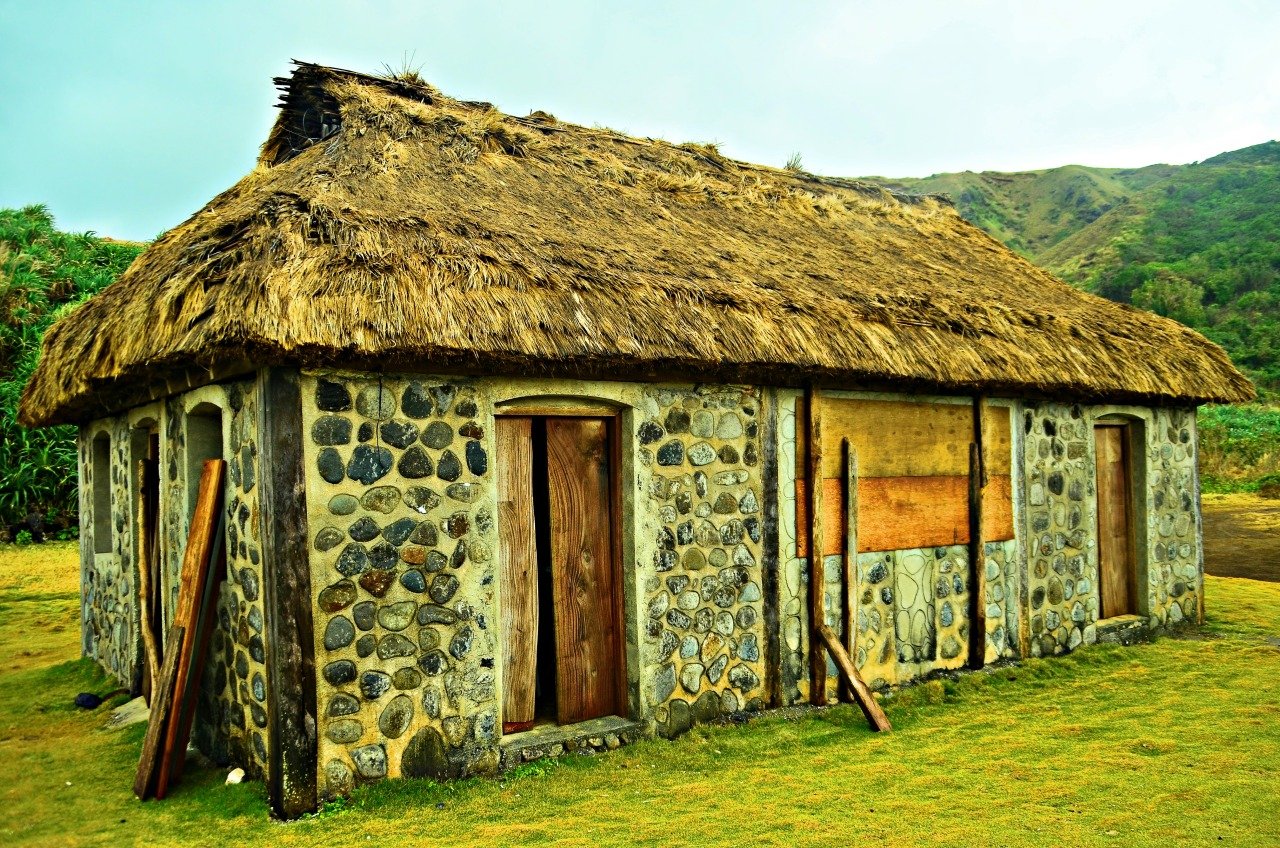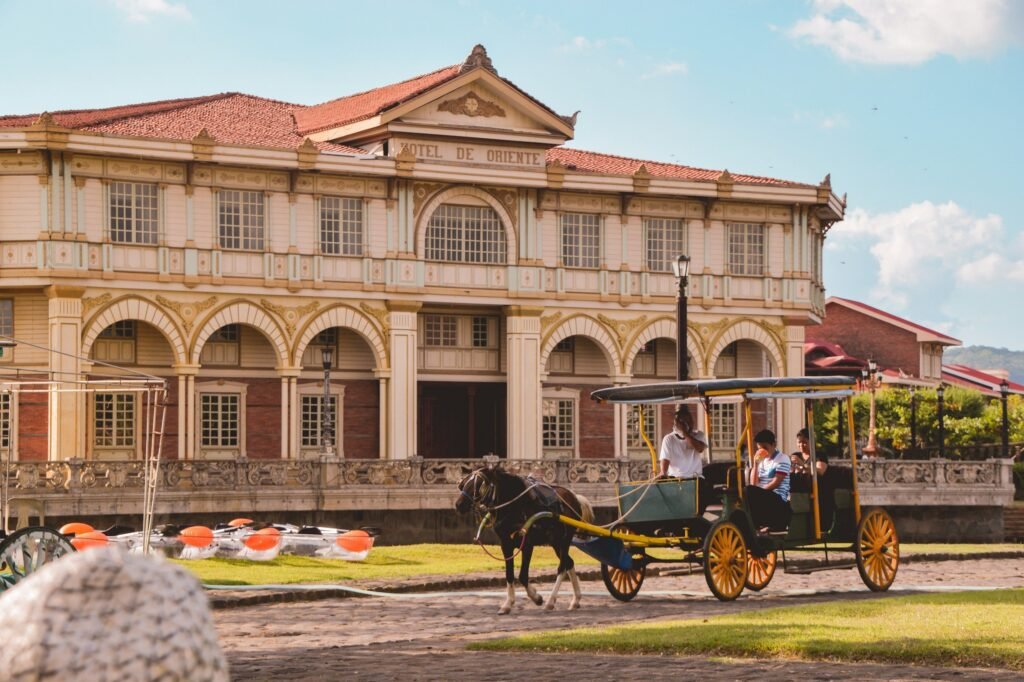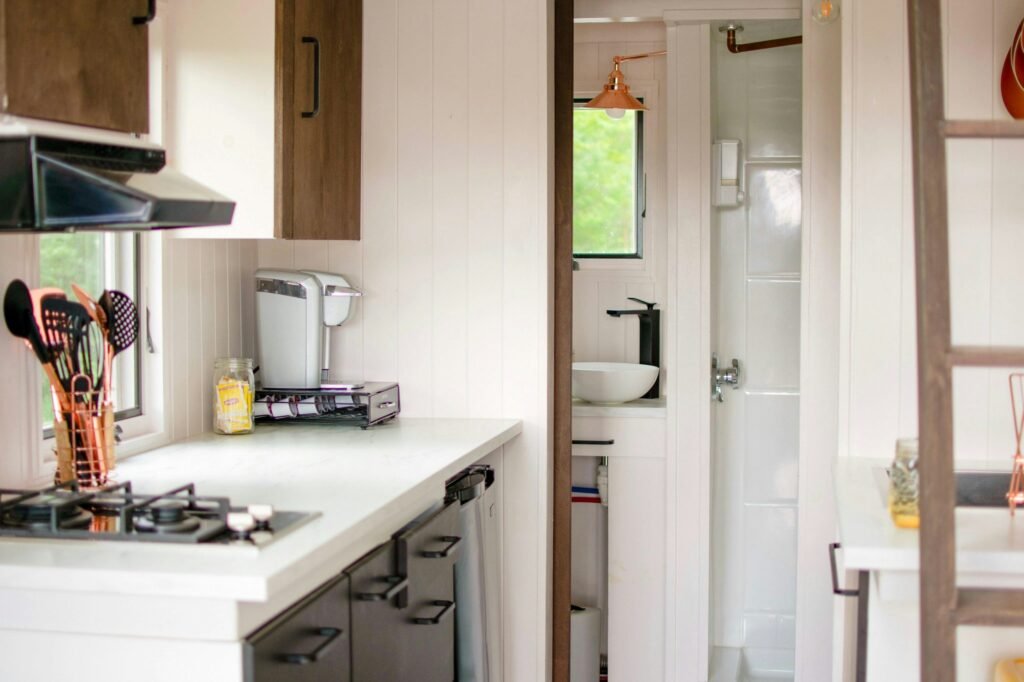
Image courtesy of iamdenise17 @ Tumblr.
Living in a tropical paradise isn’t all sunshine and beaches. The Philippines, for example, grapples with scorching temperatures year-round. But have you ever wondered how some Filipinos stay cool despite the relentless heat?
The answer lies in the ingenious design of Ivatan homes, traditional dwellings built on the island of Batanes in the Philippines’ north. These aren’t just beautiful structures; Ivatan houses are a fascinating case study in natural cooling strategies, offering valuable lessons for sustainable and comfortable living in hot climates.
The Ivatan Heritage
The Ivatan people of the Batanes Islands, located way up north in the Philippines, are known for their tough spirit and ability to live in harmony with a challenging environment. Strong winds and typhoons constantly batter the islands. Imagine, it’s more than 650 km north of Manila, the capital of the Philippines! That’s a long way! Because of this harsh climate, the Ivatan people have built unique homes called sinadumparan to withstand these tough conditions.
Built to Endure: Sustainable Materials
Standing strong against the typhoons and earthquakes that batter Batanes, sinadumparan is constructed with local, sustainable materials. Thick walls are built from limestone blocks, providing excellent insulation and thermal mass, which helps regulate indoor temperatures.
Cogon grass, a fast-growing and renewable resource, thatches the roofs, offering natural insulation and keeping the interiors cool. These locally sourced materials minimize the environmental impact of construction and ensure homes can be readily repaired using readily available resources.

Bundles of cogon grass. Image courtesy of Adobe Stock.
Design for Comfort: Adapting to the Climate
Batanes experiences strong winds and heavy rains. To combat this, Ivatan homes feature elevated foundations that protect them from flooding. Slanted cogon roofs with wide eaves efficiently channel rainwater away from the walls, further ensuring their longevity. Tiny windows on the windward side minimize drafts, while strategically placed windows on the leeward side capture cool breezes, promoting natural ventilation throughout the home.
These design elements showcase the Ivatan people’s deep understanding of their environment. Their homes are not just shelters but expressions of a sustainable way of life, perfectly adapted to the challenges and opportunities presented by the Batanes climate.
Core Principles of Natural Cooling
Unveiling the secrets behind the cool interiors of Ivatan homes! This section dives into the core principles of natural cooling employed in the design of these traditional dwellings. By understanding these strategies, we can learn valuable lessons for creating comfortable and sustainable living spaces in tropical climates.
Airflow Optimization
Unveiling the secrets behind the cool interiors of Ivatan homes! This section dives into the core principles of natural cooling employed in the design of these traditional dwellings. By understanding these strategies, we can learn valuable lessons for creating comfortable and sustainable living spaces in tropical climates.
Harnessing the Wind: Techniques for Natural Ventilation
Through centuries of experience, the Ivatan people have become masters of harnessing the wind for natural cooling. Here’s how their sustainable architecture optimizes airflow:
-
Strategic Window Placement: Ivatan houses feature strategically placed windows on opposite walls. These windows capture cool breezes, one side acting as an intake and the other as an exhaust, creating a natural cross-ventilation system that draws warm air out of the house.
-
High Ceilings and Vents: High ceilings allow warm air to rise and escape through strategically placed vents near the roof. This convection current promotes constant air circulation and prevents heat from building inside the house.
Modern Applications: Bringing the Breeze Indoors
While replicating a traditional Ivatan house might not be feasible for everyone, the principles behind their airflow optimization can be adapted to modern homes:
-
Cross Ventilation: When designing or renovating your home, consider placing windows on opposite room walls to create a natural airflow path.
-
Ceiling Fans: Ceiling fans can supplement natural ventilation by circulating air within a room. Opt for models with adjustable blade direction for optimal airflow.
-
Skylights and Vents: Explore incorporating skylights or strategically placed vents near the ceiling to allow warm air to escape.
Thermal Mass and Insulation
The walls and roof of a home play a crucial role in regulating indoor temperatures. Ivatan houses, champions of sustainable architecture, demonstrate the power of using the right materials to achieve natural cooling.
Keeping it Cool: The Power of Thermal Mass
Imagine your home as a giant heat sponge. Thick walls made from local limestone in Ivatan houses act as thermal mass. These walls absorb heat during the day and release it slowly at night, creating a naturally cooler indoor environment. This eliminates the need for constant air conditioning and reduces reliance on energy-guzzling appliances.
Sustainable Choices: Eco-Friendly Materials
The beauty of Ivatan homes lies in their reliance on readily available, eco-friendly materials. Cogon grass, a fast-growing and renewable resource, insulates the roofs. Its thick thatch is a natural barrier, preventing heat from radiating into the living space.
While finding limestone might not be practical everywhere, the concept of thermal mass can be adapted using sustainable alternatives. Bricks, recycled concrete, and even rammed earth can be used to construct thick walls that absorb and release heat naturally.
Modern insulation materials like cellulose fiber, made from recycled paper, offer excellent thermal performance while minimizing environmental impact.
Roofing Solutions
The roof is the unsung hero of natural cooling in a tropical home. Ivatan houses showcase ingenious roofing design that protects from the elements and promotes a cool and comfortable interior.
Deflecting the Heat: The Importance of Roof Design
A dark-colored roof absorbs significant heat, radiating it downwards and making the living space uncomfortably hot. Ivatan homes combat this with strategically designed roofs made from cogon grass. This light-colored, thatched roof reflects sunlight away from the house, significantly reducing heat gain within the dwelling.
The steep angle of the cogon roof also plays a vital role. It allows rainwater to run off quickly, preventing leaks and moisture build-up that can damage the structure. Additionally, the slope promotes air circulation underneath the roof, further contributing to a cooler interior.
Modern Innovations Inspired by Tradition
Sustainable building practices are constantly evolving, and modern roofing solutions are taking inspiration from the wisdom of traditional homes like those in Batanes.
-
Reflective Coatings: Highly reflective coatings applied to conventional roofs mimic the heat-reflecting properties of cogon grass. These coatings come in various colors and can significantly reduce heat absorption by the roof.
-
Ventilated Roof Cavities: Modern homes can incorporate ventilated air gaps between the roof deck and the outer roofing material. These gaps allow hot air to escape, preventing it from radiating into the living space.
Modern Adaptations
Living in a modern world doesn’t mean sacrificing comfort or sustainability. This section explores how we can adapt the ingenious cooling strategies of Ivatan homes to our contemporary dwellings.
Green Technology and Ivatan Wisdom
Living in a modern world doesn’t mean sacrificing comfort or sustainability. This section explores how we can adapt the ingenious cooling strategies of Ivatan homes to our contemporary dwellings. The key lies in combining the wisdom of the Ivatan people with the best of modern green technology.
Greener Cooling Solutions: Eco-Friendly Tech Meets Tradition
Modern advancements offer exciting possibilities to complement traditional cooling strategies:
-
Solar-Powered Ventilation: Pairing strategically placed windows and vents with solar-powered ventilation systems can create continuous, eco-friendly airflow throughout the day.
-
Evaporative Coolers: These energy-efficient appliances harness the cooling power of evaporation and work particularly well in dry climates, complementing natural ventilation employed in Ivatan homes.
Modern Homes Inspired by Tradition
The Philippines is seeing a surge in modern homes embracing Ivatan-inspired cooling techniques. Architects are incorporating:
-
Light Shelves and Deep Roof Overhangs: These features mimic the sun-shading capabilities of cogon roofs, reducing heat gain within the house.
-
Open Floor Plans with Courtyards: This layout promotes natural airflow and integrates landscaping elements like water features for evaporative cooling, inspired by the holistic approach of Ivatan settlements.
Various Challenges and Solutions in Urban Settings
While the lessons from Ivatan homes are invaluable, directly replicating their design principles in dense urban environments can be challenging. Limited space often restricts options for features like sprawling courtyards and strategically placed trees.
Urban Jungle Blues: Limited Space, Big Ideas
Here’s a look at the challenges and corresponding sustainable solutions for incorporating Ivatan-inspired cooling in urban areas:
-
Limited Land Availability: Vertical gardens offer a solution by utilizing walls and balconies for growing vines and plants that provide shade and contribute to evaporative cooling.
High-Tech Inspiration: Innovative Urban Cooling
Modern architecture is rising to the challenge with innovative solutions inspired by Ivatan ingenuity:
-
Double-Skin Facades: These building envelopes create a buffer zone between the exterior environment and the interior of the building. Air circulates within this cavity, acting as an insulation layer and reducing heat gain within the building.
-
Green Roofs: Urban rooftops transformed into lush gardens provide aesthetic appeal, insulate buildings, and help regulate temperatures by absorbing heat and releasing moisture through evaporation.
Embrace Sustainable Practices Now!
The wisdom of Ivatan homes offers a powerful reminder that sustainable and comfortable living can go hand in hand, even in hot tropical climates. Their ingenious use of natural materials, strategic design to promote airflow and ventilation, and clever integration of landscaping elements provide valuable lessons for architects and homeowners alike.
At BillionBricks, we share this vision of a sustainable future. By embracing these time-tested strategies inspired by Ivatan homes, we can all contribute to a cooler planet and create comfortable living spaces that respect the environment. Let’s harness the power of tradition and innovation to build a more sustainable future, one tropical home at a time.
Discover how you can live sustainably in our net-zero homes in San Mateo, Rizal, and Iligan, Lanao Del Norte, Philippines. For more information on owning an eco-friendly home with BillionBricks, please email us at hello@billionbricks.org.
If you’re interested in exploring Ivatan houses further, check out another article that provides additional insights: Weathering the Storm: Batanes’s Stone Houses as a Blueprint for Sustainable Living.
References:
-
3 reasons to consider limestone for your home design. (2021, February 9). Southland Stone. https://southlandstone.com/3-reasons-consider-limestone/#:~:text=Limestone%20is%20also%20a%20natural,from%20a%20kitchen%20or%20fireplace.
-
Cross ventilation: best strategies and benefits. (2022, November 28). Architropics. https://architropics.com/cross-ventilation/.
-
De Guia, K. (2023, October 20). Weathering the Storm: Batanes’s stone houses as a Blueprint for Sustainable living — BillionBricks. BillionBricks. https://billionbricks.org/updates/weathering-the-storm-bataness-stone-houses-as-a-blueprint-for-sustainable-living?rq=ivatan.
-
Steger, C. (2023). A roof of one’s own: choice and access in global thatch sustainability. World Development Sustainability, 3, 100088. https://doi.org/10.1016/j.wds.2023.100088.
-
Using green roofs to reduce heat islands | US EPA. (2023, June 28). US EPA. https://www.epa.gov/heatislands/using-green-roofs-reduce-heat-islands.
-
Vertical Gardens – FasterCapital. (n.d.). FasterCapital. https://fastercapital.com/keyword/vertical-gardens.html.



